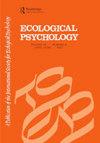Information–Movement Coupling in The Control of Driver Approach to an Intersection
IF 1.7
3区 心理学
Q3 PSYCHOLOGY, EXPERIMENTAL
引用次数: 5
Abstract
ABSTRACT We characterized the control mechanisms underlying crossing an intersection with vehicular traffic. Specifically, we identified potential markers of the coupling between information and movement through a kinematic analysis of the approach. We exposed participants in a driving simulator experiment to several scenarios. We manipulated task constraints by varying the acceleration capabilities of the vehicle and the time available to make speed adjustments. The results highlighted gradual, systematic adjustments, which make it possible to cross the intersection in a zone that is close to the center of the intervehicular gap. The functional nature of these adjustments was highlighted by concomitant and opposite variation in the variability of current speed and current deviation. In all cases, an increase in the standard deviation of speed was accompanied by a reduction in the standard deviation of current deviation. Neither time to make adjustments nor acceleration capabilities modified the observed kinematic patterns, but they did modulate the adjustments that were produced. Overall, these results were consistent with a control mechanism based on the implementation of an information–movement cycle.信息-运动耦合在驾驶员接近路口控制中的应用
摘要:本文描述了车辆穿越十字路口的控制机制。具体来说,我们通过对该方法的运动学分析确定了信息和运动之间耦合的潜在标记。我们在驾驶模拟器实验中让参与者接触了几个场景。我们通过改变车辆的加速能力和可用于调整速度的时间来操纵任务约束。结果强调了渐进的、系统的调整,这使得在接近车辆间隙中心的区域穿过交叉路口成为可能。在电流速度和电流偏差的可变性中伴随的和相反的变化突出了这些调整的功能性质。在所有情况下,速度标准偏差的增加都伴随着电流偏差标准偏差的减少。调整的时间和加速能力都没有改变观察到的运动模式,但它们确实调节了产生的调整。总的来说,这些结果与基于信息移动周期实现的控制机制一致。
本文章由计算机程序翻译,如有差异,请以英文原文为准。
求助全文
约1分钟内获得全文
求助全文
来源期刊

Ecological Psychology
PSYCHOLOGY, EXPERIMENTAL-
CiteScore
3.30
自引率
10.50%
发文量
8
期刊介绍:
This unique journal publishes original articles that contribute to the understanding of psychological and behavioral processes as they occur within the ecological constraints of animal-environment systems. It focuses on problems of perception, action, cognition, communication, learning, development, and evolution in all species, to the extent that those problems derive from a consideration of whole animal-environment systems, rather than animals or their environments in isolation from each other. Significant contributions may come from such diverse fields as human experimental psychology, developmental/social psychology, animal behavior, human factors, fine arts, communication, computer science, philosophy, physical education and therapy, speech and hearing, and vision research.
 求助内容:
求助内容: 应助结果提醒方式:
应助结果提醒方式:


